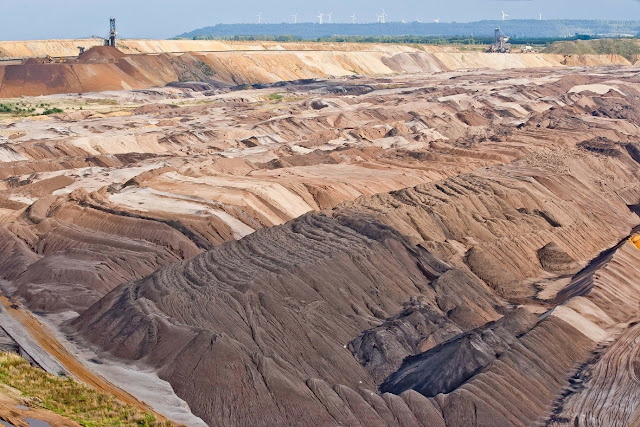Mining Footprint
An opencast brown coal
mine
A
mining footprint refers to the changes brought about to an area by mining
activities in the area. This includes the changes in the environment, health of
the population, job opportunities provided or taken away, economic changes,
population numbers that may change, etc.
Mining
has always had a dramatic impact on the area where it is practiced and often
this impact is often more negative than positive, but humanity’s insatiable
desire for metals, precious and otherwise, and fuels, drives this industry and
the mining companies bosses have just as insatiable greed for the money
produced by this industry.
Sulphur lakes in Ethiopia
Mining
is one of the largest industries in the world, if not the largest and is
practiced throughout the known world, in almost every country, even in the Amazon.
When mining activities are practiced carelessly, they can be massively
destructive and cause irreparable damage to large areas of the earth. The
best-known examples of such mismanagement have been the fracking in the United
States and the burning oil fields in the large oil-producing countries.
This
doesn’t need to be the case, though. There are mining companies that practice
sustainable mining and extend services to the community around them and try to
minimize any destructive environmental and health footprint. This is not an
easy thing to do by any means and costs a lot to achieve, but it is possible
and ethically this should be done with all mining.
A sustainably
rehabilitated mine in Spain
Unfortunately,
money talks, and there are always people willing to take a pay-off to look the
other way, or produce false Environmental Impact Assessments, issue illegal
mining licences and so on. This is generally where bureaucracy fails and the
whole system collapses.
There
are mainly two types of mining activities in which minerals are removed and
processed. Open-pit mining and underground shaft and tunnel mining. Underground
mining is much more dangerous than open-pit mines, but is less unsightly,
except for the dumps and processing plants. Water from underground mining
builds up and needs to be pumped out and treated to prevent it contaminating
groundwater and surface water.
Examples
of Open Pit Mines
Typically,
the environmental impact of mining is mainly in huge dumps of waste crushed
rock piled high next to massive, deep pits which have been scoured out of the
landscape, making the area look like a moonscape. Ground water and rain-water
often collects in these pits and seep from the underground mines, and is highly
acidic and laden with metals and other dangerous substances, such as cyanide,
methane, uranium, lead, etc.
Inside
an underground mine
Another
big negative footprint is that of dust containing dangerous substances such as lead,
arsenic, zinc, manganese, etc. that is blown off the mine dumps and when
tailings dams dry out as a result of evaporation of the water. This dust is
very harmful to health.
Mine
Dump, Krugersdorp, South Africa
Such
effects can be mitigated and there are technologies that reduce the impact of these
negative effects, but as mentioned before, they are expensive to implement and
too many mining companies have shirked their responsibility in this regard.










